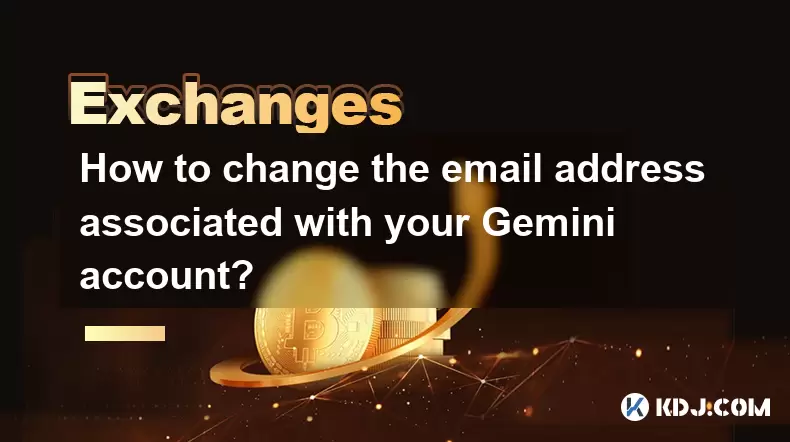-
 Bitcoin
Bitcoin $114200
0.00% -
 Ethereum
Ethereum $3637
0.56% -
 XRP
XRP $2.950
-2.01% -
 Tether USDt
Tether USDt $0.9999
0.02% -
 BNB
BNB $761.0
0.55% -
 Solana
Solana $164.1
-1.38% -
 USDC
USDC $0.9999
0.02% -
 TRON
TRON $0.3332
0.36% -
 Dogecoin
Dogecoin $0.2012
-0.52% -
 Cardano
Cardano $0.7261
-1.41% -
 Hyperliquid
Hyperliquid $37.62
-2.13% -
 Stellar
Stellar $0.3930
-2.65% -
 Sui
Sui $3.441
-0.16% -
 Bitcoin Cash
Bitcoin Cash $563.8
0.70% -
 Chainlink
Chainlink $16.50
0.09% -
 Hedera
Hedera $0.2424
-0.14% -
 Ethena USDe
Ethena USDe $1.001
0.01% -
 Avalanche
Avalanche $22.20
0.00% -
 Litecoin
Litecoin $118.0
-2.48% -
 UNUS SED LEO
UNUS SED LEO $8.991
0.12% -
 Toncoin
Toncoin $3.195
-3.87% -
 Shiba Inu
Shiba Inu $0.00001217
0.12% -
 Uniswap
Uniswap $9.674
-0.21% -
 Polkadot
Polkadot $3.633
1.00% -
 Monero
Monero $295.3
-0.82% -
 Dai
Dai $0.9999
0.00% -
 Bitget Token
Bitget Token $4.321
-0.41% -
 Cronos
Cronos $0.1392
0.73% -
 Pepe
Pepe $0.00001027
-0.89% -
 Aave
Aave $258.5
0.32%
Mobile Crypto.com margin trading method
For a high-volume trading experience and margin protection, Crypto.com allows traders to borrow funds with customizable leverage, stop-losses, and take-profit parameters.
Nov 29, 2024 at 06:10 pm

Mobile Crypto.com Margin Trading Method: A Comprehensive Guide
Introduction
Margin trading is a popular strategy in the cryptocurrency market that allows traders to borrow funds from an exchange to increase their potential profits. By using margin, traders can leverage their positions and trade with larger amounts than they would be able to with their own capital. However, margin trading can also be risky, so it's important to understand how it works before you start trading.
This article will provide a step-by-step guide to margin trading on the Crypto.com mobile app. We'll cover everything you need to know, from how to get started to how to manage your risk.
Step 1: Open a Margin Trading Account
The first step is to open a margin trading account with Crypto.com. To do this, you'll need to:
- Have an existing Crypto.com account.
- Verify your identity.
- Fund your account with at least the minimum margin balance (currently 1,000 USD or equivalent).
Once your account is approved, you'll be able to start trading on margin.
Step 2: Choose a Trading Pair
The next step is to choose a trading pair. You'll need to select a pair that has a high trading volume, as this will ensure that you can easily enter and exit your trades.
Some popular trading pairs for margin trading include:
- BTC/USD
- ETH/USD
- LTC/USD
- XRP/USD
Step 3: Set Up Your Margin Position
Once you've chosen a trading pair, you'll need to set up your margin position. This includes setting the following parameters:
- Loan amount: The amount of funds you want to borrow from the exchange. The loan amount cannot exceed the available margin balance in your account.
- Leverage: Leverage is the ratio of your borrowed funds to your own capital. For example, if you have a leverage of 5x, you'll be able to borrow $5 for every $1 of your own capital.
- Stop loss: A stop loss order is a type of order that automatically sells your cryptocurrency if the price falls below a certain point. This helps to protect you from losses if the market moves against you.
- Take profit: A take profit order is a type of order that automatically sells your cryptocurrency if the price rises above a certain point. This helps to you to lock in profits if the market moves in your favor.
Step 4: Place Your Trade
Once you've set up your margin position, you can place your trade. To do this, simply click on the "Buy" or "Sell" button in the trading interface.
Step 5: Manage Your Risk
Margin trading can be risky, so it's important to manage your risk carefully. Here are a few tips:
- Use a stop loss order to protect yourself from losses.
- Don't overlever yourself. The higher your leverage, the greater your risk.
- Keep an eye on your margin balance. If your margin balance falls below the minimum requirement, you may be forced to liquidate your positions.
Conclusion
Margin trading can be a powerful tool for increasing your potential profits, but it's important to understand the risks involved before you get started. By following the steps outlined in this article, you can help to minimize your risks and trade safely on margin.
Disclaimer:info@kdj.com
The information provided is not trading advice. kdj.com does not assume any responsibility for any investments made based on the information provided in this article. Cryptocurrencies are highly volatile and it is highly recommended that you invest with caution after thorough research!
If you believe that the content used on this website infringes your copyright, please contact us immediately (info@kdj.com) and we will delete it promptly.
- Brazil, Bitcoin, Hearing Date: Is Brazil About to Embrace Bitcoin?
- 2025-08-06 20:30:38
- Stabull DEX on Base Chain: A New Era for Stablecoins?
- 2025-08-06 20:47:53
- WeWake Finance: Is This the Crypto ROI Opportunity You've Been Waiting For?
- 2025-08-06 21:10:18
- PancakeSwap, US Stocks, and Perpetual Contracts: A New Frontier in DeFi
- 2025-08-06 21:10:18
- South Korea, Stablecoins, and Online Banks: KakaoBank's Bold Move
- 2025-08-06 20:47:53
- Crypto, ASEAN, and the Philippines: Web3's Rising Star?
- 2025-08-06 21:55:07
Related knowledge

How to set and manage alerts on the Gemini app?
Aug 03,2025 at 11:00am
Understanding the Gemini App Alert SystemThe Gemini app offers users a powerful way to stay informed about their cryptocurrency holdings, price moveme...

How to use the Gemini mobile app to trade on the go?
Aug 04,2025 at 09:14am
Setting Up the Gemini Mobile AppTo begin trading on the go using the Gemini mobile app, the first step is installing the application on your smartphon...

How to set up a corporate account on Gemini?
Aug 05,2025 at 03:29pm
Understanding Gemini Corporate AccountsGemini is a regulated cryptocurrency exchange platform that supports both individual and corporate account crea...

How to change the email address associated with your Gemini account?
Aug 06,2025 at 08:49pm
Understanding the Importance of Updating Your Email on GeminiYour email address serves as a primary identifier and communication channel for your Gemi...

What to do if you forgot your Gemini password?
Aug 04,2025 at 03:42am
Understanding the Role of Passwords in Gemini AccountsWhen using Gemini, a regulated cryptocurrency exchange platform, your password serves as one of ...

What are the websocket feeds available from the Gemini API?
Aug 03,2025 at 07:43pm
Overview of Gemini WebSocket FeedsThe Gemini API provides real-time market data through its WebSocket feeds, enabling developers and traders to receiv...

How to set and manage alerts on the Gemini app?
Aug 03,2025 at 11:00am
Understanding the Gemini App Alert SystemThe Gemini app offers users a powerful way to stay informed about their cryptocurrency holdings, price moveme...

How to use the Gemini mobile app to trade on the go?
Aug 04,2025 at 09:14am
Setting Up the Gemini Mobile AppTo begin trading on the go using the Gemini mobile app, the first step is installing the application on your smartphon...

How to set up a corporate account on Gemini?
Aug 05,2025 at 03:29pm
Understanding Gemini Corporate AccountsGemini is a regulated cryptocurrency exchange platform that supports both individual and corporate account crea...

How to change the email address associated with your Gemini account?
Aug 06,2025 at 08:49pm
Understanding the Importance of Updating Your Email on GeminiYour email address serves as a primary identifier and communication channel for your Gemi...

What to do if you forgot your Gemini password?
Aug 04,2025 at 03:42am
Understanding the Role of Passwords in Gemini AccountsWhen using Gemini, a regulated cryptocurrency exchange platform, your password serves as one of ...

What are the websocket feeds available from the Gemini API?
Aug 03,2025 at 07:43pm
Overview of Gemini WebSocket FeedsThe Gemini API provides real-time market data through its WebSocket feeds, enabling developers and traders to receiv...
See all articles

























































































